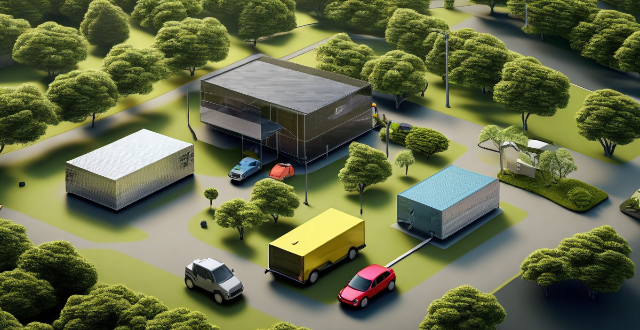Recycling and reusing power batteries from electric vehicles is crucial for environmental protection, resource conservation, and economic benefits. The recycling process involves collection, sorting, dismantling, reprocessing, and refining of used batteries to extract valuable materials. However, challenges such as technical difficulties and economic viability must be addressed. Reusing power batteries extends their lifespan, reduces costs, and opens up innovative applications like energy storage systems or mobile charging stations. Assessment, modification, integration, and monitoring are key steps in reusing power batteries. Despite challenges like compatibility issues and safety concerns, there are opportunities for innovation in both recycling and reusing processes.

Recycling and Reusing Power Batteries
Introduction
Power batteries, especially those used in electric vehicles (EVs), are designed to last for a certain period of time. However, when they reach the end of their lifespan or are no longer suitable for use in EVs, it is important to consider whether they can be recycled or reused. In this article, we will explore the possibilities of recycling and reusing power batteries after their use in electric vehicles.
Recycling Power Batteries
Why Recycle?
Recycling power batteries is essential for several reasons:
- Environmental Impact: Power batteries contain hazardous materials that can harm the environment if not disposed of properly. Recycing helps reduce the environmental impact by minimizing waste and pollution.
- Resource Conservation: Recycling conserves valuable resources such as metals and minerals that can be recovered from the batteries. This reduces the need for new raw materials and energy consumption in mining and refining processes.
- Economic Benefits: Recycling creates economic opportunities by generating revenue from the sale of recovered materials and reducing disposal costs.
How to Recycle?
The process of recycling power batteries involves several steps:
1. Collection: Used power batteries must be collected from various sources such as EV manufacturers, repair shops, and consumers.
2. Sorting: The collected batteries are sorted based on their type, size, and condition.
3. Dismantling: The sorted batteries are dismantled to separate useful components such as cells, modules, and cables.
4. Reprocessing: The separated components undergo reprocessing to extract valuable materials such as lithium, cobalt, and nickel.
5. Refining: The extracted materials are refined to produce high-quality products that can be used in new power batteries or other applications.
Challenges and Opportunities
Recycling power batteries faces several challenges, including:
- Technical Difficulties: The complex design and composition of power batteries make it challenging to recover valuable materials efficiently and safely.
- Economic Viability: The cost of recycling may be higher than the value of recovered materials, making it difficult to justify the investment required for recycling infrastructure.
- Regulatory Requirements: There may be legal requirements and regulations governing the handling and disposal of power batteries that must be followed during recycling.
Despite these challenges, there are also opportunities for innovation and improvement in the recycling process, such as developing more efficient technologies for material recovery or finding new uses for recycled materials.
Reusing Power Batteries
Why Reuse?
Reusing power batteries offers several benefits:
- Extended Lifespan: By repurposing used power batteries, their lifespan can be extended beyond their original intended use in electric vehicles.
- Reduced Costs: Reusing power batteries can save money by avoiding the need to purchase new batteries or invest in expensive recycling infrastructure.
- Innovative Applications: Used power batteries can be repurposed for various applications, such as energy storage systems, backup power supplies, or even mobile charging stations.
How to Reuse?
The process of reusing power batteries involves several steps:
1. Assessment: Used power batteries must be assessed to determine their remaining capacity and suitability for reuse.
2. Modification: Depending on the intended application, modifications may be required to adapt the battery pack to its new purpose.
3. Integration: The modified battery pack is integrated into the new system or application.
4. Monitoring: Once integrated, the performance of the reused battery pack is monitored to ensure its effectiveness and safety.
Challenges and Opportunities
Reusing power batteries faces several challenges, including:
- Compatibility Issues: Not all used power batteries may be compatible with new applications due to differences in design and specifications.
- Safety Concerns: Used power batteries may pose safety risks if not handled properly or if they fail during operation.
- Limited Demand: The demand for reused power batteries may be limited depending on market conditions and competition with new battery technologies.
Despite these challenges, there are also opportunities for innovation and improvement in the reuse process, such as developing standardized interfaces for compatibility or creating specialized markets for reused power batteries.